Are Gray Whales the Ocean’s Friendliest Creatures?
We have encountered, socialized with, and even kissed and petted gray whales, which leads us to conclude they are the ocean’s friendliest creatures. Where we got up close and personal with our friends from the deep was in San Ignacio Bay, half way down of Baja California (Mexico).
Every year, gray whales migrate more than 10,000 miles from their rich summer feeding grounds along coastal Alaska and the Bering Sea to the coastal lagoons of the Baja peninsula in Mexico.
Both males and females make the migration, but the females generally spend more time in Mexico because they go down earlier, have their calves, and then take extra time to nurture their babies and make sure they have grown strong enough for the long journey back to the Arctic.
The males and “teenagers” depart Mexico and head north early in the spring, swimming north along the coastline, following the spring blooms of phytoplankton and zooplankton.
Since the number of gray whales spotted migrating south off the Southern California coast this year was double what it was compared with the same period last year, one has to wonder if that reflects changing migration patterns, or a change in amount of food in California waters – perhaps due to 2015-16’s El Nino, or perhaps a population boom for the once endangered species.
Hunted to near extinction in the early 1900s, the gray whales were declared endangered in 1973 but were taken off the list in 1994 after the population boomed. Perhaps that boom is still continuing.
Since there are so many whales in the coastal waters off Southern California this year, consider taking a whale watching trip if you can make it to this area. Just take care not to disturb the whales,or hit or injure them – or yourself by taking a boat that is not experienced in whale watching. It’s important to give the whales their space.
The best way to see the whales is on small skiffs with tiny motors on San Ignacio Bay in southern Baja California, which is in Mexico. Thanks to our dear friends, Peggy and Lloyd, we had the good fortune to do this a few years ago and these photos are from our adventure together.
San Ignacio Bay is one of three lagoons on the southwest coast of Baja that are the winter home of the gray whale. The whales use these warm, tranquil, shallow waters to give birth, and then nurture their calves, teaching them to feed, before their long swim back to their summer home in the north.
San Ignacio is the only lagoon that remains undeveloped and pristine. About 20 years ago, Mitsubishi Corporation was going to build a salt plant here, which would have wreaked havoc on the environment and disturbed the gray whales’ habitat. The NRDC and others objected strongly to the plant, and eventually succeeded in persuading Mitsubishi to drop their plans, leaving the whales habitat undisturbed. So every year, the gray whales are free to return to San Ignacio Bay , undisturbed, to spend give birth, feed and grow strong, and frolic with odd-looking humans on little boats who make funny noises and are fun to play with.
People are not allowed to swim in the bay, but you can go into the bay on small boats. We stayed on shore in a fishing camp with naturalists whose mission is to keep the bay clean and safe for the whales. In a very responsible way, they take a small number of visitors into the bay on small skiffs to observe the whales. What really happens is the whales observe you, and play with you.
We learned that what attracted the whales to our boat the most was the laughter of the children in our party. We also sang to them, and they seemed to like that as well. Also, we had a boom-box music system that we put on the bottom of the boat, so the music’s vibrations would carry through the water. Then, we tried different music to see what the whales liked best. We all made guesses about what that might be. I guessed Gregorian Chants. Bzzzzz. Wrong. Guess what the whales seemed to like the best? Margaritaville, sung by Jimmy Buffet!
The whales were very playful, especially the calves. They seemed to enjoy having us splash water on them the most. Sometimes they flicked their tail flukes and splashed us back! They seemed to have a good sense of fun.
They whales also liked to come next to the boat and have us pour water into their blow holes. You had to be careful though. You didn’t want your hand to get sucked down the blow hole – or to get wet with whale who-knows-what when they exhaled and the water from inside them came shooting out.
One of the most dramatic whale movements we got to see a lot of was when the whales leapt out of the water or “spyglassed,” which is when they lift themselves vertically out of the water in an upright posture.
We also enjoyed seeing many varieties of birds in the lagoon, as well as sea lions, dolphins, and even coyote. But the whales were our main focus. It was an experience of a lifetime to frolic on the bay with these gentle giants.

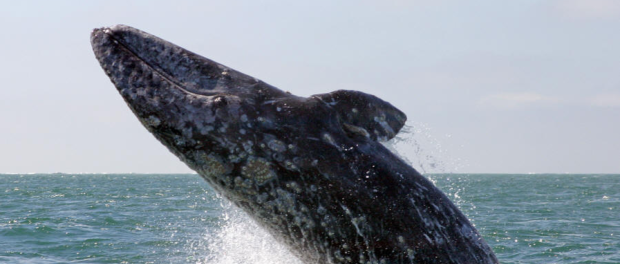
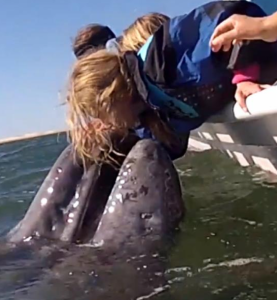
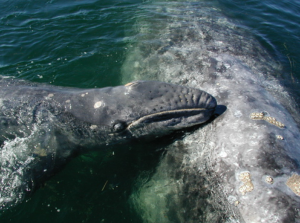
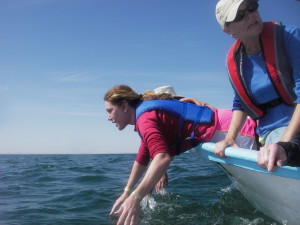
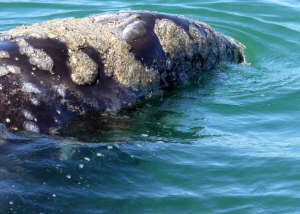
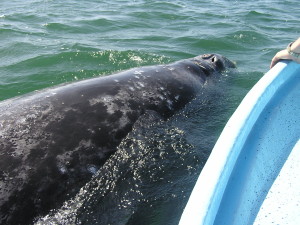
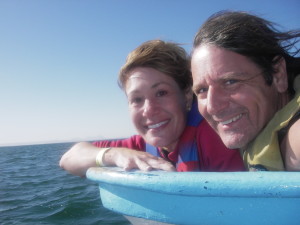
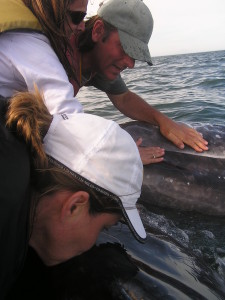
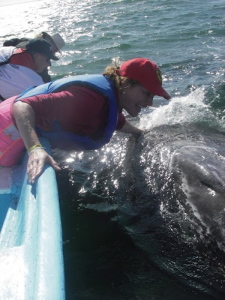
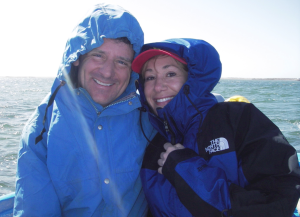
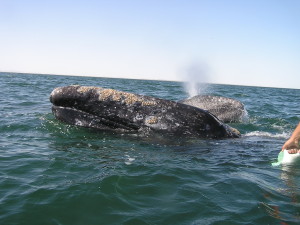
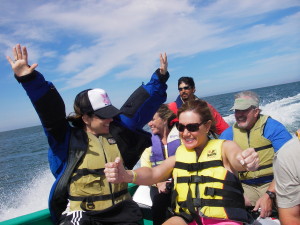
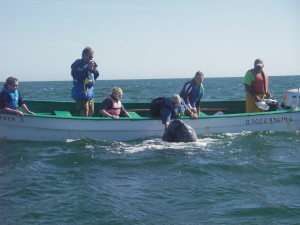
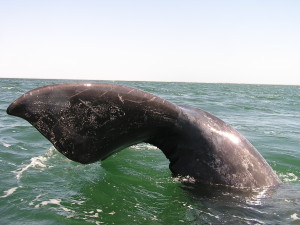
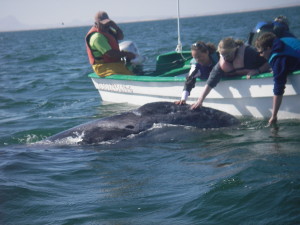
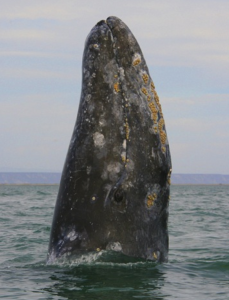
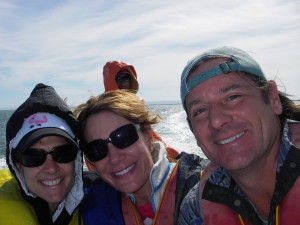
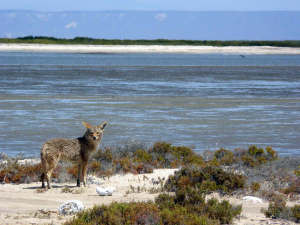

Leave a comment